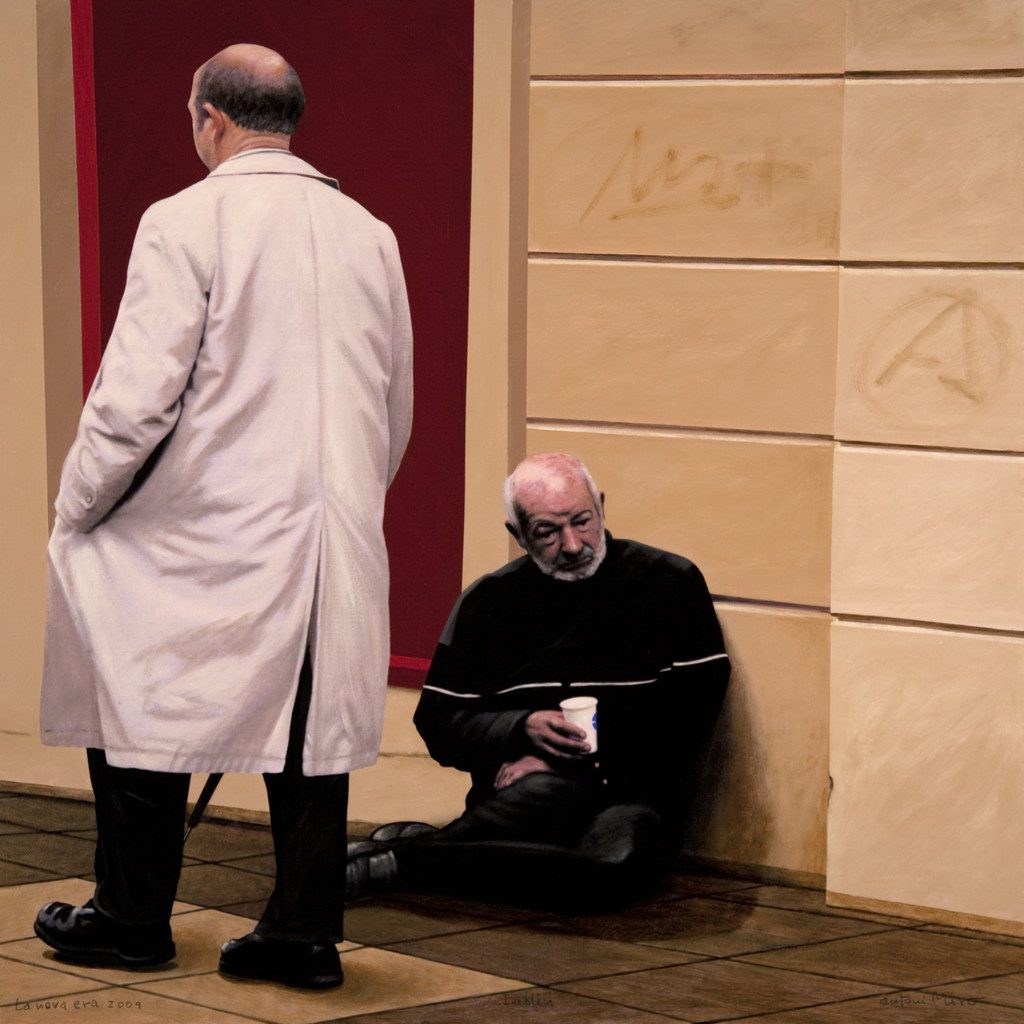La nova era (The new era)
On a street in the Polish city of Lublin, a beggar looks blankly for help as a person passes him by. The scene is very similar to others painted by the artist over these years but in this case the work denounces a more general issue: the introduction of Capitalism in the former Eastern Bloc after the fall of the Soviet Union.
With this new era, Miró considers that the differences between classes have become an unbridgeable gulf, with the poor plumbing new depths of poverty. Several authors have reflected on the artist’s ideology. Rafael Acosta, for example, wrote that “Toni Miró is an intellectual of committed leftist positions, a permanent denouncer and critic of social injustices in the second half of the 20th Century”. However, as Romà de la Calle notes, Miró’s art “does not solely make ideological points but is also a record of evident aesthetic communication and experience”.
Specifically, the beggar sits in front of a façade that hints at exhaustion, in spite of what the appearances may suggest. The chipped corner, and the painted protest slogans that someone has tried to conceal are the elements with which the author builds the metaphor of the social climate. The beggar appears next to a shop window in which the artist has made the products vanish. His central position in the canvas, the fact that there are no other objects in the picture, and that the other person appears with his back to the beggar contribute to focus the tension on the drama of the befallen hardship.
The horizontal plane of the beggar’s look, the white line on his sweater, and the wall joints contrast with the vertical line of the passer-by. The stillness of the man sitting is also at odds with the movement of the man walking past. The differentiation between the two realities, that of the well-off character and that of the needy one, is also achieved through colour (the passer-by’s white gabardine and the main character’s black clothes).
Miró has also deliberately changed the colour of the paving. He creates a kind of plinth beneath the wealthy passer-by. It is not that Antoni Miró “turns the marginal into the picturesque” — something that Fernando Castro highlights. Instead he seeks to stop us forgetting the suffering of others”.
Santiago Pastor Vila
